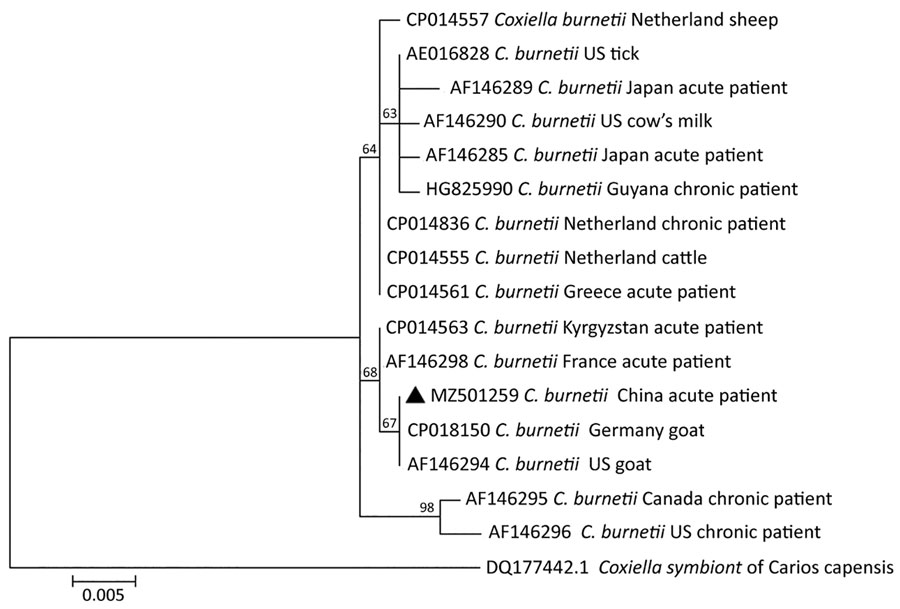Volume 28, Number 12—December 2022
Research Letter
Delayed Diagnosis of Acute Q Fever, China
Figure 2

Figure 2. Phylogenetic tree of Coxiella burnetii from a patient with Q fever in Shandong Province, China, 2019. Triangle indicates the strain detected in this study. The phylogenetic tree was constructed using the complete isocitrate dehydrogenase gene sequence (1,300-bp) with the maximum-likelihood method using MEGA 7.0 (https://www.megasoftware.net). Bootstrap values >50% from 1,000 replicates (shown on the nodes). Scale bar indicates substitutions per site.
Page created: November 14, 2022
Page updated: November 21, 2022
Page reviewed: November 21, 2022
The conclusions, findings, and opinions expressed by authors contributing to this journal do not necessarily reflect the official position of the U.S. Department of Health and Human Services, the Public Health Service, the Centers for Disease Control and Prevention, or the authors' affiliated institutions. Use of trade names is for identification only and does not imply endorsement by any of the groups named above.